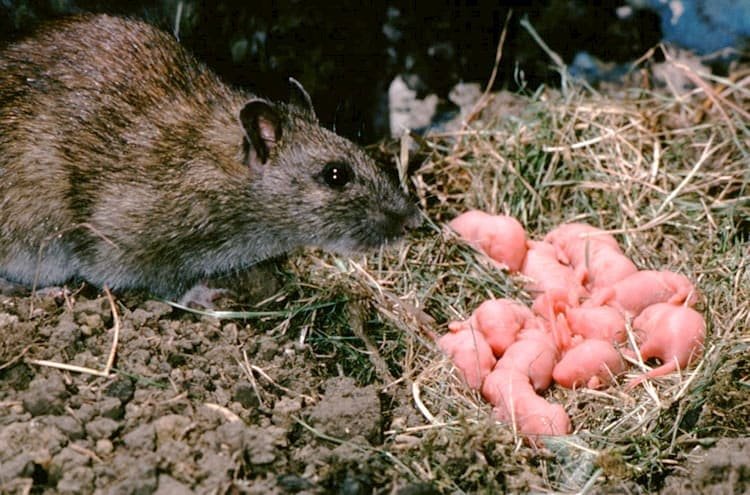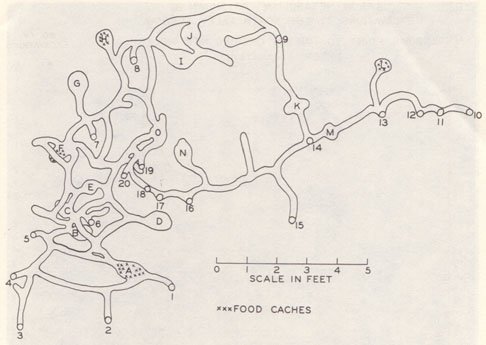Rats Nest
How to identify a rat nest, rat burrow or a rat nesting site
Rats nest in burrows but also rat nests can be found in lofts, attics, under eaves and even in cavity walls. They will shred available materials such as loft insulation, cardboard and other soft items to make nests which you are likely to find concentrated in one area.
Rat Droppings
Scratching Noises
Footprints
Burrows
Nests
Causing Damages
Rub Mark
what does rat nest look like ?
How to identify a Rats Nest?
You are likely to find a rat nest in a warm and well-hidden spot, as they prefer to build their nests in secure and concealed locations. These nests are typically constructed using shredded materials such as fabrics, paper, and plant matter, which provide insulation and comfort for the rats. Common nesting sites include wall cavities, attics, basements, and cluttered areas where they can easily hide and access food sources. There are many types of rats (Roof Rat/Black Rat) & (Norway Rat/Brown Rat) and some make rat holes in yard. If you think your dealing with mice you can tell the difference here Mice vs Rats
There are several signs that can indicate that a rat is making a nest:
Droppings: Rats leave droppings that are dark, shiny and about the size of a grain of rice. If you see droppings near a potential nest site, it could be an indication that rats are present.
Gnaw marks: Rats have strong teeth and are known to gnaw on a variety of materials. If you notice gnaw marks on wood, plastic, or other materials, it could be an indication that rats are present.
Nesting materials: Rats use a variety of materials to construct their nests, including insulation, paper, and other debris. If you notice large piles of materials that look like they have been gathered or gnawed on, it could be an indication that rats are building a nest.
Burrows: Rats are known to burrow underground, and if you notice holes in the ground or signs of digging, it could be an indication that rats are present.
Noise: Rats are known to be active at night and they can make noise such as scratching, scurrying, and gnawing sounds. If you hear these noises in your walls or attic, it could be an indication that rats are present.
It's important to note that not all of these signs have to be present to confirm a rat's nest. If you suspect a rat's nest in your home or property it's recommended to contact a professional pest control service.
First thing first, you want to make sure you’re dealing with rats, and not a different animal in the attic. If you have rats, you may notice things being chewed, such as electrical cords, wooden furniture, insulation, and food packaging. You might see a big ball of fluffy up material that the rats are using as a nest. You may see rat droppings, especially near areas you believe the rats frequent; rat droppings are larger than those of mice and about the size of raisins. Rodents tend to nest in more protected areas that homeowners don’t usually frequent. In addition, different species of rats build nests that typically vary in appearance and can be found in different spots on your property. Generally speaking, a rat’s nest looks like a ball that is 4 to 6 inches in diameter that is loosely woven, as told by expert rodent removal techs.
Rat nests are usually constructed of debris, twigs, cotton, and plant materials, and can be found in dark, enclosed areas like crawlspaces, between walls, in attics, under porches, or in boxed-in plumbing. In outdoor areas, such as debris piles, yard water, old furniture, ponds, trees, and garbage dumps are inviting to rats. The presence of rats can easily be detected once home and business owners recognize the signs to look for. Perhaps the most obvious, rat droppings as large as 3/4 inch to 1/4 inch may be located in feeding areas, around nests, and along runways. Similarly, urine spots often appear in passage ways and may be discovered with the use of ultraviolet light.
A nest will sometimes look like a bird’s nest, but instead of leaves and twigs, a black rat or Norway rat nest will typically incorporate any soft material that can be found around the home, such as paper products, cardboard, and even shredded cloth. A roof rat nest can commonly be mistaken for birds, therefore, it’s important to inspect the nest to make sure it is made from products that are available around your home.
Where Do Rats Nest?
Understanding where rats typically nest is important as this can provide crucial prevention measures in the future when inspecting for nests. Rats can nest both indoors or outside in garden areas, so let’s explore both.
How Many Rats are in a Nest?
The number of rodents inside a nest is based on a few different factors: the type of rat and how large and spread out the infestation is. The Norway rat, also known as brown rats, usually have the largest numbers with between 5-20 rodents to upwards of possibly 100. We have caught over 100 at a single house before.
What time of year do rats nest?
Rodents can nest inside of a house any time of the year, however, rats will typically move indoors during the colder months and then go outdoors during the warm summer months in search of easily available food. If your garden is filled with edible plants, indoor rodents may also create a burrow to move outside and inside with ease.
What happens if you disturb a rat’s nest?
If you find a nest, it is important not to disturb it. Rats can be aggressive when provoked and the pathogens that they carry can easily be transmitted to you through the air even if you do not touch the nest. The best course of action is to immediately contact a pest service provider to come out and look at the nest and assess the situation and the treatment plan necessary.
How do you find a rat’s nest?
Finding a nest can be difficult if the rodents have decided to build their nest behind walls throughout the house. You may have to rely on hearing the rodents to know if a nest is behind the walls; additionally, looking for rat holes around the walls is another way to assess if a rat nest may be present.
Rat burrows
Rats are clever rodents and will adapt to whatever situation they find themselves in. When it comes to dwelling habits, you can find evidence of a rat nest, rat burrow or rat hole, depending on what was easiest.
Typically, if you find rat holes and burrows they are going to belong to Norway rats. These rats often burrow alongside foundations, in overgrown areas and below garbage or woodpiles. In homes, their burrows or nests are found in basements or the lower levels of homes and buildings. It is possible for there to be multiple burrows in close proximity to each other. So, what does a rat hole look like?
The entrance to a rat's burrow is typically 2 to 4 inches across. Active burrows have smooth walls and the dirt is hard-packed with loose dirt fanning out at the entrance. The entrance will also be clear of debris and spider webs. To determine if a burrow is active, stuff old newspaper or leaves down the entry hole and wait. When rats are present they will usually clear the opening within a day or two.
Now that you know what the exterior looks like, you may be asking, "What does a rat burrow look like inside?" Norway rat burrows include a tunnel connecting the entrance to several escape holes and the main nest, which is belowground. Burrows can be up to 18 inches deep, include up to 3 feet of rat tunnels and house multiple.
Beyond nests, other things that you might notice when dealing with a rat infestation, include:
rat droppings, which are usually about a half-inch long with pointed ends;
gnaw marks on belongings or shredded materials;
burrows or evidence of digging under your shed, garbage can, outdoor pet shelter or compost pile;
sounds in your attic or scratching noises in the wall;
dead rats in your pool or carcasses delivered by your pet;
bites out of nuts or fruit in your garden or yard;
a musky odor from the rodent or the smell of urine, particularly in areas with little ventilation;
greasy smudge marks on your wall, rafters, beams or pipes or
live rats.
Rat nest - behavior
Rats typically nest in a variety of places, including underground burrows, the walls and attics of buildings, and in piles of debris. They are known to be opportunistic and will take advantage of any available shelter.
The distance that rats travel from their nest can vary depending on the availability of food and other resources. In urban areas, where food is more readily available, they may travel up to 100-150 yards from their nest in search of food. In more rural areas, where food is scarce, they may travel up to a mile or more from their nest. Additionally, rats are known to establish territorial boundaries and may only travel within a specific area.
It's worth noting that rats are known to be very adaptable and resilient animals, they can live in a variety of environments and can travel long distances to find food and shelter. so, it's important to take preventive measures to avoid rat infestations.
The number of rats that live in a nest can vary depending on the size of the nest and the availability of resources such as food and shelter. Typically, a rat's nest will have a dominant male and female rat, along with their offspring. The number of offspring can vary depending on the number of litters the female has per year, which can be up to 5 to 6 litters per year. Each litter can have 5 to 12 pups, so a nest can have a lot of rats if the female is reproducing frequently. It's worth noting that rats are known to be social animals and they tend to live in groups, so it's common to find multiple nests in a single area.







